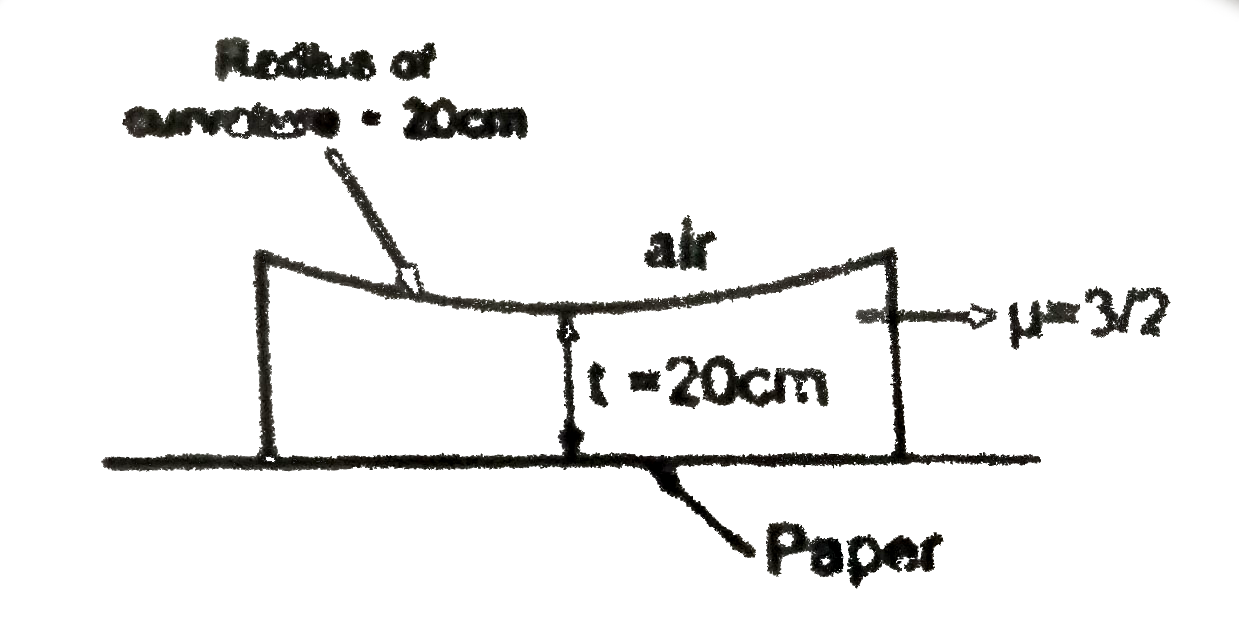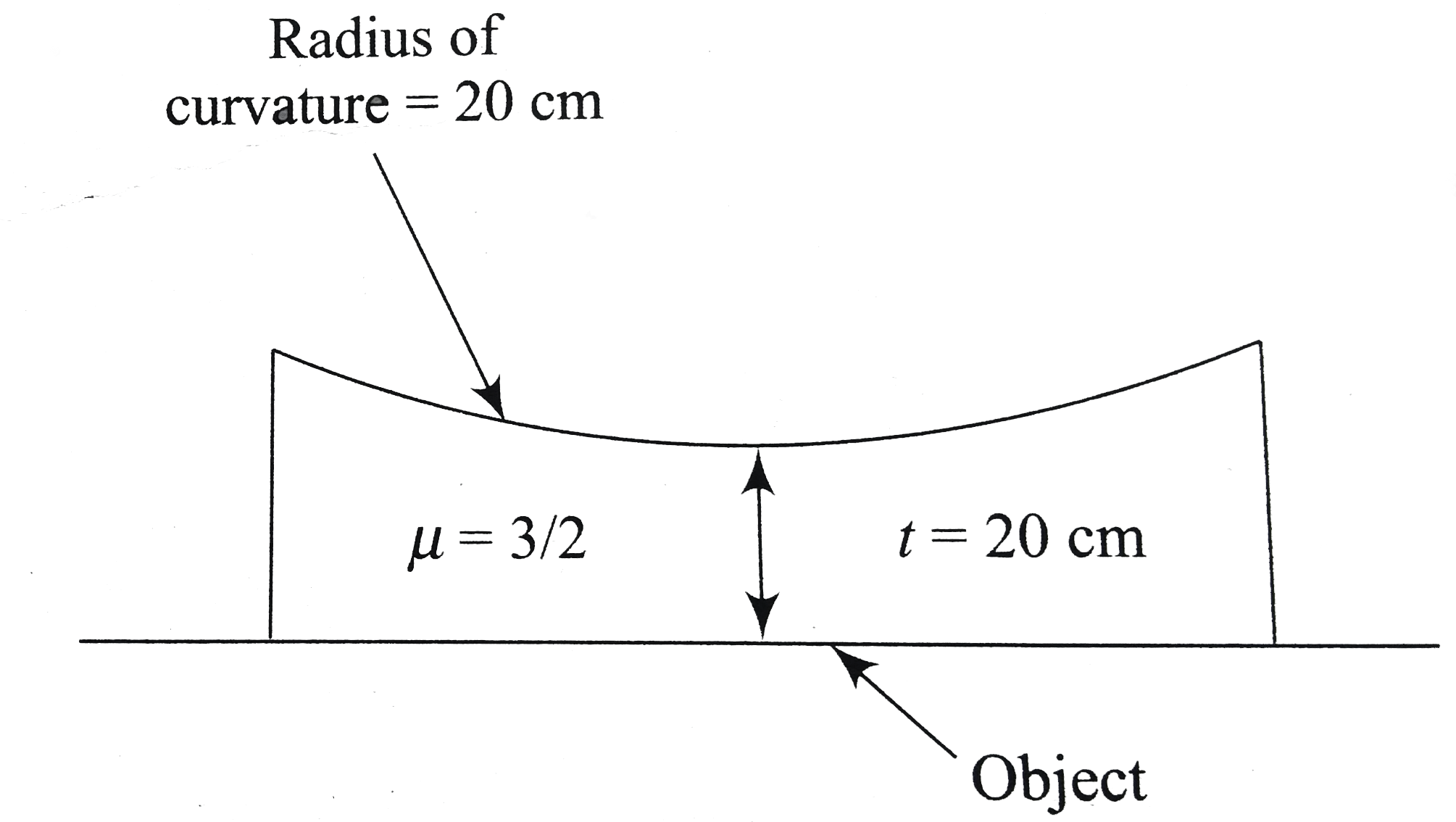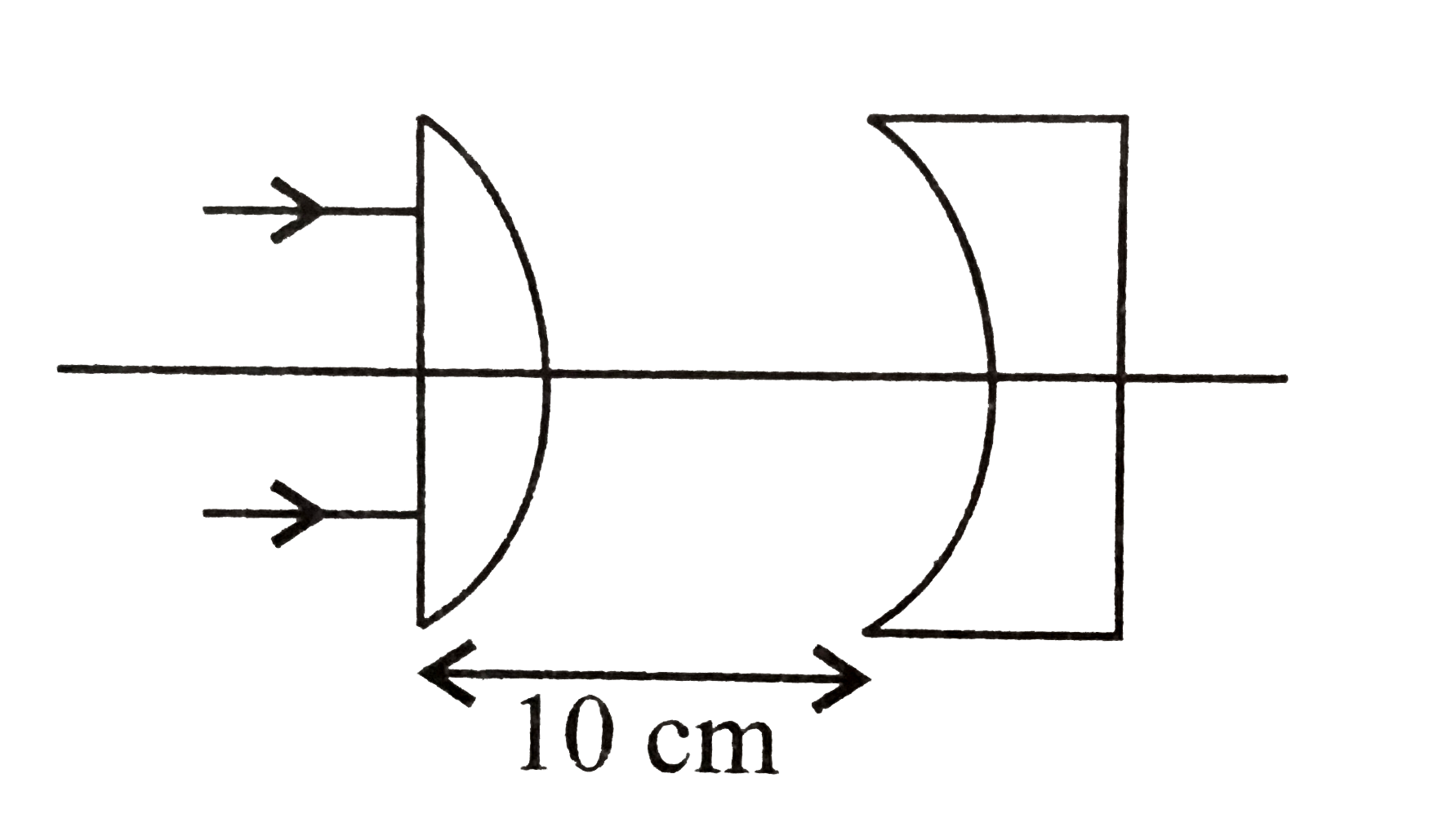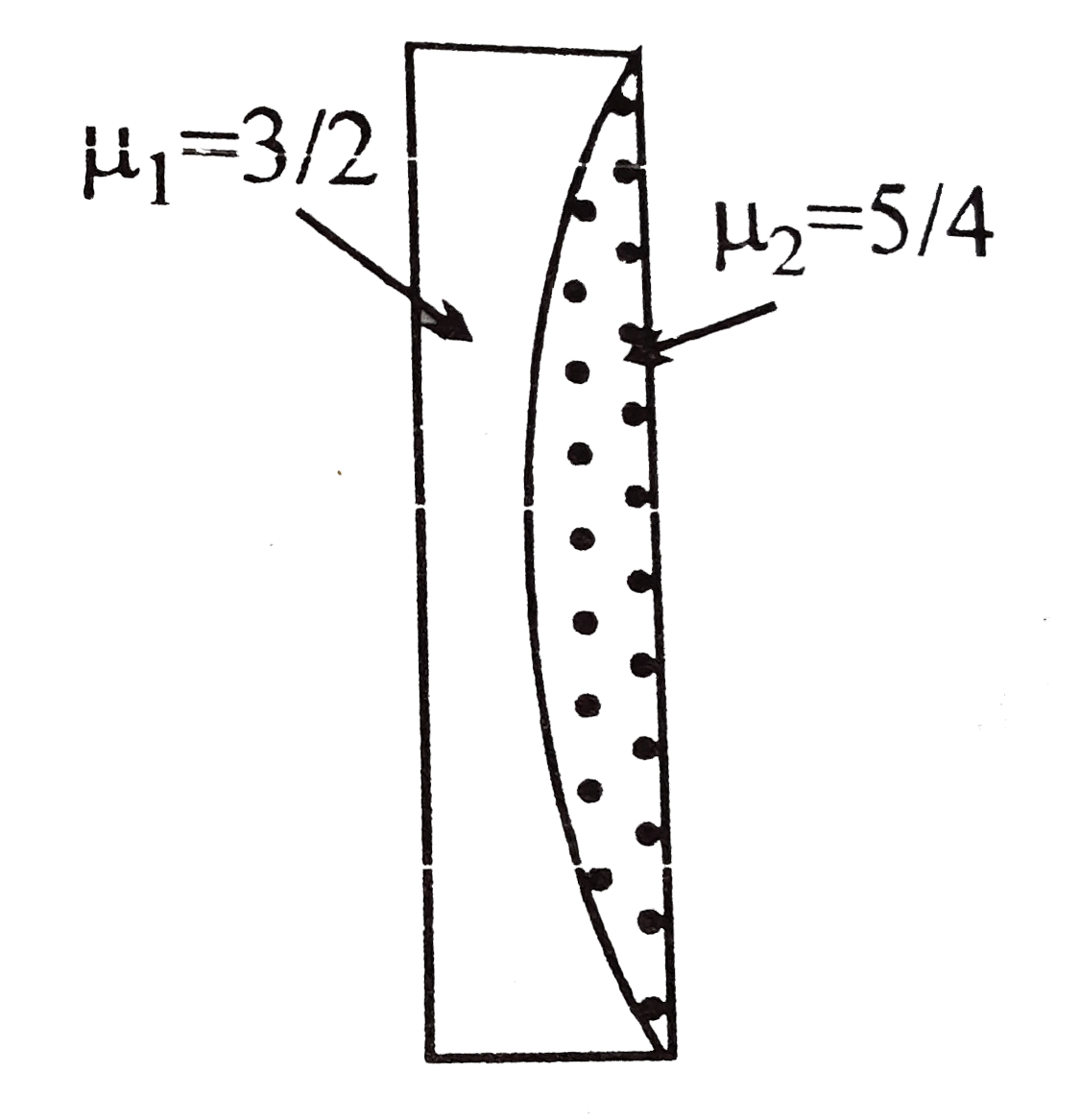In the given figure a plano-concave lens is placed on a paper on which a flower is drawn. How far above its actual position does the flower appear to be ?

10cm
15cm
50cm
None of these
The correct Answer is:a.
Considering refraction at the curved surface,
Applying
i.e. 10cm below the curved surface or 10cm above the actual position of flower.

Topper's Solved these Questions
- GEOMETRICAL OPTICSBOOK - CENGAGE PHYSICS ENGLISHCHAPTER - GEOMETRICAL OPTICSEXERCISE - Assertion-Reasoninig
2 Videos
- GEOMETRICAL OPTICSBOOK - CENGAGE PHYSICS ENGLISHCHAPTER - GEOMETRICAL OPTICSEXERCISE - Linked Comprehension
51 Videos
- GEOMETRICAL OPTICSBOOK - CENGAGE PHYSICS ENGLISHCHAPTER - GEOMETRICAL OPTICSEXERCISE - Subjective
26 Videos
- ELECTRON,PHONTS,PHOTOELECTRIC EFFECT & X-RAYSBOOK - CENGAGE PHYSICS ENGLISHCHAPTER - ELECTRON,PHONTS,PHOTOELECTRIC EFFECT & X-RAYSEXERCISE - dpp 3.3
15 Videos
- HEATING EFFECT OF CURRENTBOOK - CENGAGE PHYSICS ENGLISHCHAPTER - HEATING EFFECT OF CURRENTEXERCISE - Thermal Power in Resistance Connected in Circuit
27 Videos
Similar Questions
If the lens is placed in water instead of air, how does its focal length change?
View SolutionIn Figure, a fish watcher watches a fish through a 3.0 cm thick glass wall of a fish tank. The watcher is in level with the fish, the index of refraction of the glass is 8/5 and that of the water 4/3 .
a. To the fish, how far away does the watcher appear to be ?
b. To the watcher, how far away does the fish appear to be ?

View Solution
Knowledge Check
In the given figure, the radius of curvature of curved surface for both the plano-convex and plano-concave lens is 10 cm and refractive index for both is 1.5. The location of the final image after all the refractions through lenses is
 A15 cmB20 cmC25 cmD40 cm
A15 cmB20 cmC25 cmD40 cm
Which part of a flower does protect its reproductive organs within a bud?
View SolutionA hemispherieal paper weight contains a small flower on its axis of symmetry at a distance of 4 cm from its flat surface. Where is the flower appears to an observer when he looks at it along the axis of symmetry from the top? (Index of refraction of glass = 1.5)
<imga≤ocr_imageload∈g=lazysrc=https://d10lpgp6xz60nq.cloudfront.net/physics_images/ARH_NEET_PHY_OBJ_V02_C09_E01_237_Q01.pngwh=80%mx-autosty≤=background:white;>
A.15 cm from top B.20 cm from top C.5 cm from top D.25 cm from top
View SolutionA thin plano-convax lens fits exactly into a plano concave lens with their plane surface parallel to each other as shown in the figure.the radius of the curvature of the curved surface R=30cm The lens are made of different material having refractive indexμ1=32and μ2=54as shown in the figure

(i) if plane surface of the plano -convex lens is silvered,then calculate the equivalent focal length of this system and also calculate the nature of this equivalent mirror .
(ii) An object having transverse length 5cmis placed on the axis of equivalent mirror(in part1)atadistance15cm from the equivalent mirror along principal axis.Find the transverse magnification produced by equivalents mirror.
View SolutionThe given figure shows a convergent lens placed inside a cell filled with liquid. The lens has focal length +20 cm when in air , and its metrial has refractive index 1.50 . If the liquid has refractive index 1.60 , then focal length of the lens in the cell is
View SolutionIf red and far red lights are given, how do they affect flowering in plants?
View SolutionWhere does triple fusion take place in a flowering plant? Why is it so called? Mention its significance.
View SolutionAn object is placed 50cm from a screen as shown in figure.
A converging lens is moved such that line MN is its principal axis. Sharp images are formed on the screen in two positions of lens separated by 30cm. Find the focal length of the lens in cm.

View Solution
